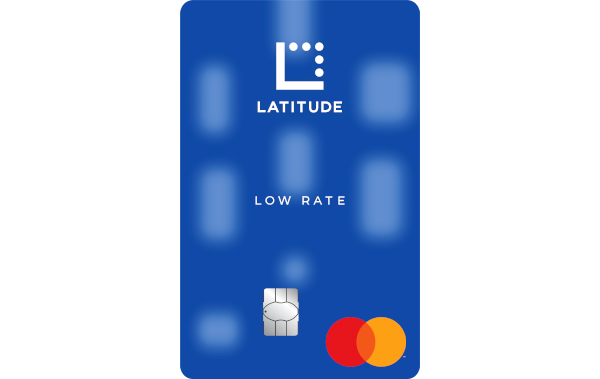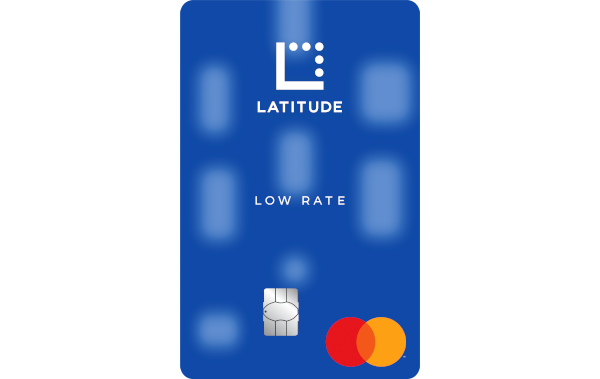- Home
- Credit Cards
- Low Rate Cards

Compare low interest rate credit cards
A low rate credit card will have low, or no, ongoing fees. Compare low rate credit cards to find an offer that suits you. Consider the purpose of your credit card and what features are important to you before you decide.
40+ credit card providers in RateCity’s database
130+ credit card products in RateCity’s database
Updated on
Arguably the biggest cost of a credit card is the purchase rate. Cardholders who are looking to keep costs down, or always find themselves paying interest each statement period, may want to consider a low rate credit card instead.
While some credit cards focus on offering features including frequent flyer rewards, no annual fee or a 0% balance transfer, a low rate credit card can provide a “no frills” alternative to reduce the interest you pay on purchases.
What is a low rate credit card?
A low rate credit card is one that charges a lower interest rate than the market average. The average credit card rate generally sits around 15% to 17%, and this hasn't shifted too much in the last decade.
The lowest rates on the market will vary depending on the lender, but Australians looking to keep costs down will typically aim for a credit card under 12%.
If you're looking for a card with a lower purchase rate, some of these options listed in the RateCity database might offer competitive rates that could potentially suit your financial needs better:
| Card | Company | Purchase Rate % |
|---|---|---|
| Low Rate Visa Credit Card | G&C Mutual Bank Limited | 7.49% |
| Low Rate Credit Card | Community First Bank | 8.99% |
| Low Rate Credit Card | MOVE Bank | 8.99% |
| Foundation Visa Card^ | Defence Bank | 8.99% |
| Easy Low Rate Visa Credit Card | Easy Street Financial Services | 8.99% |
| Low Rate Visa Credit Card | Australian Unity | 9.90% |
| ^offers 3.99% p.a. six month introductory rate on balance transfers, purchases and cash advances. | ||
Source: RateCity.com.au. Data accurate as of 01 December 2024.
What are the different types of credit card interest?
If you are in the market for a low rate credit card, it’s important to understand the different types of interest rates that can be charged.
- Purchase rate: This interest rate is charged when you make purchases using your credit card, including bills, groceries and other miscellaneous payments
- Cash advance rate: This interest rate is charged when you withdraw cash from your credit card, purchase foreign currency or perform international money transfers
- Promotional or introductory rate: This is the rate offered by a lender for a limited time, as a promotional offer, and usually reverts to a higher rate when the offer expires.
- Balance transfer rate: Also known as a balance transfer fee, this is the interest rate that lenders will charge when you make a balance transfer from one credit card to another, usually to consolidate debt
How is credit card interest charged?
Credit card interest is charged daily, based on the amount of debt you owe. The amount of interest you may be charged depends on a range of factors, including:
- Credit card type - Visa, Mastercard or American Express can carry varying interest rates and fees.
- Credit card purpose - Platinum cards, rewards credit cards, frequent flyer credit cards and travel credit cards may come with higher interest rates. This is because ongoing costs like this, and annual fees, help to pay for rewards programs, sign-up bonus points, complimentary insurances, like travel insurance, concierge services and more.
However, if you pay off your debt in full every month, and do not withdraw cash with your card, you will not be charged interest. This is fundamentally the best way to avoid paying purchase rates or cash advance rates.
Where things can get complex, is in the calculation of interest free periods. A mistake some cardholders make is assuming that their interest-free days start again for every new purchase made. It’s important to remember that your interest is charged according to your billing cycle, not from the first day you make a purchase on the credit card.
Example: How your days interest-free are calculated:
- Your credit card has an interest-free period of 55 days; and your billing cycle begins on April 1.
- You make a purchase with your credit card on April 10.
- The 55-day interest period for that purchase begins on April 1, not April 10.
- So your interest-free period is actually only 46 days.
How does a low rate credit card work?
If you only make minimum repayments on your card balance, don’t repay the debt during your interest-free period, or have an outstanding balance at the end of your billing cycle, the lender will charge you interest on your remaining debt.
Similar to a personal loan or a home loan, you are charged interest to pay for the cost of borrowing. However, unlike a personal loan or a home loan, you can avoid paying interest on your credit card by paying off your balance in full every month.
You can also reduce the interest you are charged by choosing a credit card with a lower than average interest rate. This is where low rate credit cards can come in handy.
Is a low rate credit card the best option?
If you cannot pay off your credit card debt in full, a low rate credit card could be the best option for you. However, if you always clear your balance each statement period, you may be better off with a low fee credit card.
Disciplined savers may find that card fees are the only ongoing cost charged to their card account. Choosing a card with no annual fee, or no foreign transaction fees, for example, can help to make your credit card more affordable.
Low rate credit cards are often recommended as a first credit card for young Australians due to the lower risk of accruing debt than a higher rate card. Alternatively, young Australians may want to weigh up the benefits and risks of alternative access to credit, such as buy now pay later platforms, such as Afterpay or Zip Pay.
Pros and cons of low rate credit cards
Here are some of the benefits and disadvantages of credit cards with low interest rates:
Benefits of a low rate credit card
- Lower your interest repayments: A low interest rate means you will have lower monthly repayments than a higher rate card, which can lead to large savings
- Reduce your debt: Transferring credit card debt to a low rate credit card can be an effective way to manage debt, especially if your card has a balance transfer offer.
Disadvantages of a low rate credit card
- Fewer perks: Low rate credit cards are usually “no frills” and have have fewer rewards and perks than higher rate cards.
- Higher fees: Some low rate credit cards will generate returns for the lender through higher fees in other areas, such as balance transfer fees or high annual fees.
What to look out for with low rate credit cards
All credit cards come with various features, terms and conditions that you need to check before you decide to apply. You could have the lowest interest rate on the market, but if you're paying through the nose in fees, this may be redundant.
Here are a few things to consider if you’re applying for a low rate credit card.
- Check total cost: Check your card does not charge high fees in other areas that mean the total cost of the low rate credit card is more than one with a slightly higher rate. This includes annual fees, account-keeping fees, foreign transaction fees, late payment fees, fees charged for additional cardholders and more.
- Review special offers: Look at whether the low rate is standard, or whether they only offer the low rate for a short period of time, such as the first year, before reverting to a higher rate.
- Are features or rewards offered?: Credit cards that offer rewards programs, insurance cover, and even balance transfer offers will typically come with higher ongoing costs.
- Minimum credit limit: The higher your credit limit, the higher amount of debt you are able to accrue on your card account, regardless of the interest charges. If you max out your card balance, even a low interest rate charge on this could see your debt snowball out of control.
- Be careful of rejection: Applying for a credit card, then being rejected due to a low credit score or low income will negatively impact your credit score and could impact your ability to get a credit card or other loan in the future.
To view a credit card's T&Cs, hop on to the card provider's website for more information. You can also read the cards Product Disclosure Statement online to learn more about potential ongoing costs, and any eligibility criteria for your application, or eligible purchases for rewards credit cards.
Frequently Asked Questions
Did you find this page helpful?
^Words such as "top", "best", "cheapest" or "lowest" are not a recommendation or rating of products. This page compares a range of products from selected providers and not all products or providers are included in the comparison. There is no such thing as a 'one- size-fits-all' financial product. The best loan, credit card, superannuation account or bank account for you might not be the best choice for someone else. Before selecting any financial product you should read the fine print carefully, including the product disclosure statement, target market determination fact sheet or terms and conditions document and obtain professional financial advice on whether a product is right for you and your finances.











































